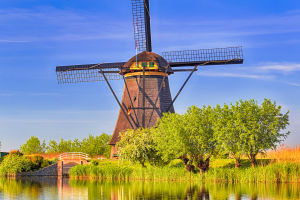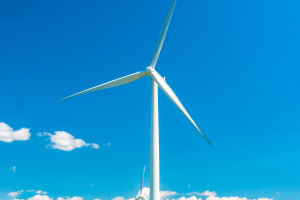Alpine areas are often covered in deep snow, which may seem counterintuitive: shouldn't it be warmer the closer you are to the sun?
This phenomenon involves multiple meteorological and geographical factors.
First, one of the main causes of snow accumulation in the mountains is the relationship between altitude and air temperature. Generally, as altitude increases, the temperature decreases. This is because air becomes thinner at higher altitudes.
Warm air rises from the ground as the Earth's surface absorbs solar radiation and converts it into heat. However, as it rises, air pressure decreases, the air expands, and the temperature drops.
This phenomenon is called the tropospheric temperature lapse rate, and typically the temperature drops by about 6.5 degrees Celsius for every 1,000 meters of increase.
Therefore, although the mountains are closer to the sun, they maintain a low-temperature environment all year round due to the significantly lower temperatures, which is suitable for the existence of snow and glaciers.
Even though mountainous areas are closer to the sun, it doesn’t mean they receive more solar energy. After the solar radiation reaches the surface, part of it is absorbed by the ground, and the other part is reflected to the atmosphere and even space.
Snow and glaciers on the surface of mountains have high reflectivity and can reflect most of the solar radiation, thereby reducing heat absorption on the surface.
This means cooler surface temperatures in high mountain areas help keep snowpack from melting. In addition, the presence of snow and glaciers further enhances reflection, creating a self-reinforcing cooling mechanism.
The thin atmosphere in high mountain areas also leads to lower temperatures. As altitude increases, the density of the atmosphere decreases, and the distance between air molecules increases, reducing heat transfer efficiency.
This means that high mountain areas have difficulty maintaining higher temperatures even under direct sunlight. In addition, in a low-pressure environment, the water vapor content in the air decreases and the humidity decreases, thereby reducing the thermal insulation effect of clouds and water vapor on the earth's surface.
Low humidity makes the nighttime radiation cooling effect more significant, and the temperature drop more dramatic, which is one of the reasons why nighttime temperatures in mountainous areas are extremely low.
The influence of topography on alpine snowpack cannot be ignored. Mountains often block airflow, causing more precipitation on windward slopes and less precipitation on leeward slopes.
Precipitation on windward slopes is mostly in the form of snow, because in alpine areas, the temperature is below freezing all year round, and precipitation condenses into snow. A large amount of snowfall accumulates on mountain tops and mountain slopes, forming a thick layer of snow.
There is more snowfall in winter, and the snow does not melt during the cold season and gradually accumulates to form a stable snow cover. In addition, mountains can also affect local climate and form unique microclimate conditions, further promoting the formation and maintenance of snow cover.
In high mountain areas, there are significant differences in snow cover between winter and summer. In winter, the temperature is extremely low, snowfall occurs frequently, and the snow layer continues to thicken.
Although the temperature rises in summer, most of the snow is retained due to the lower temperatures in the alpine areas and the reflection of snow and glaciers.
Even if part of the snow melts in the summer, it will refreeze at night, creating an ice and snow cycle. In addition, the relatively low summer precipitation in alpine areas also contributes to the long-term preservation of snowpack.
This phenomenon not only reveals the complexity of atmospheric physics and the geographical environment but also demonstrates the scientific principles behind seemingly paradoxical phenomena in nature.
By comprehensively analyzing these factors, we can better understand the causes of mountain snow accumulation and gain insights into the fields of meteorological research, environmental protection, and climate change.


